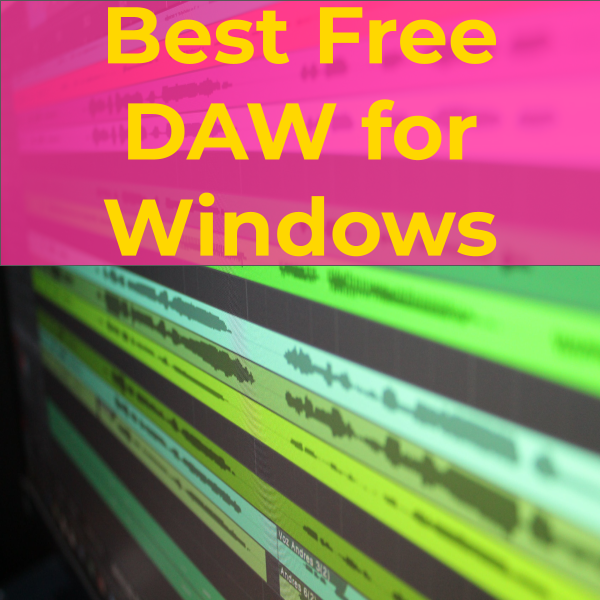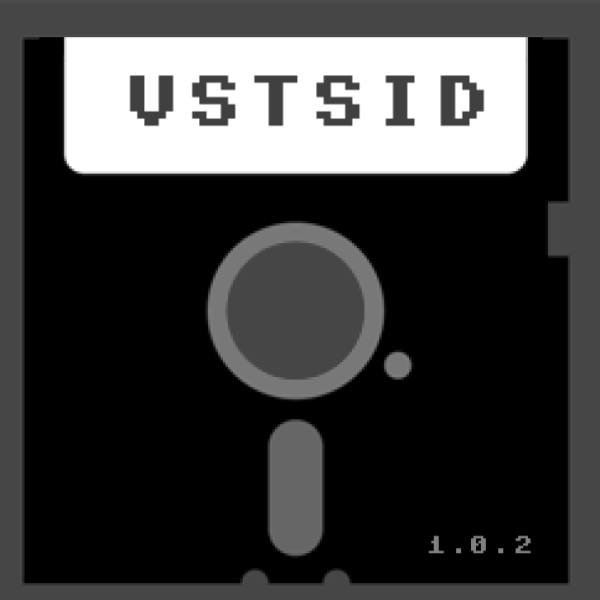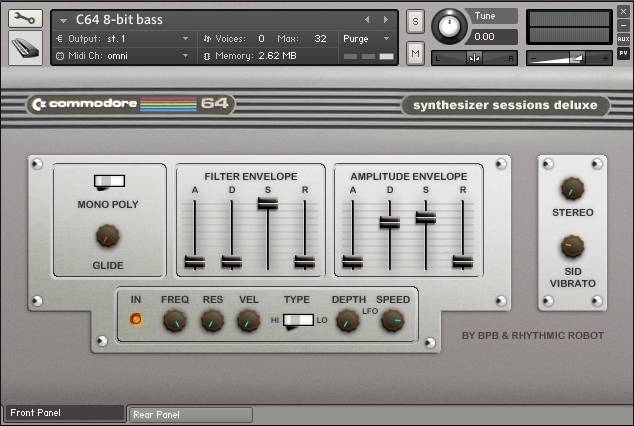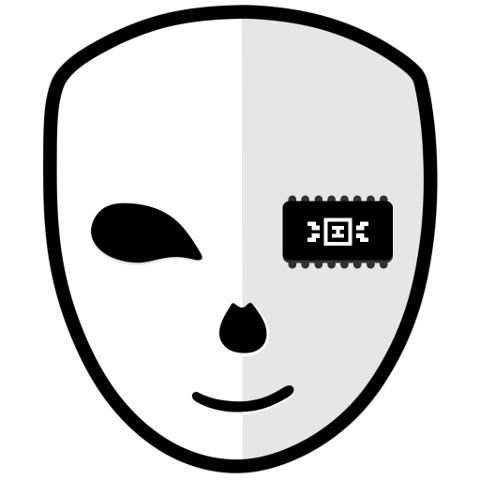The Commodore 64 has an iconic sound that stands out from other 8-bit devices. And if you’re a media composer or just a chiptune fan, you can easily find plenty of tools to help you make C64-style music.
In this guide, we’ll show you to make Commodore 64 music using free and paid software. Plus, we’ll provide a few tips to help you master the original 8-bit style.

How the Commodore 64 Made Music
The Commodore 64 came with the SID chip (Sound Interface Device), which had three programmable oscillators. Each one could produce four types of waveforms: pulse, sawtooth, triangle, and noise.
Essentially, the SID chip was a primitive synthesizer — archaic by most standards, but very cutting edge for an ‘80s home computer!
Characteristics of Commodore 64 Music
The SID chip could only produce three sounds at a time. It doesn’t sound like much to work with. But you can work around those limitations to create unique and compelling tracks.
SID Chip Limitations:
- Limited to 3 Voice Channels
- 4 types of waveforms available (pulse, sawtooth, triangle, and noise)
- Each channel can alternate between waveforms
3 Methods For Writing Commodore 64 Music
Here, we’ll go over three basic methods for writing Commodore 64 music. With each of these, you can use free tools. But some premium tools are also available.
Method 1: Using VST Plugins With Your DAW
A digital audio workstation (DAW) is arguably the most accessible way to write C64-style music today. DAWs also provide other notable benefits:
- Low barrier of entry
- Unlimited tracks
- Ability to record audio
- Ability to use other instruments, FX, and mixing plugins
If you’re new to music production, you’ll need a DAW. Thankfully, you have plenty of options.
Mac users can start with GarageBand. For Windows users, I usually recommend Cakewalk by Bandlab. There are also plenty of other free DAWs available:
Cakewalk is a professional-level DAW with features that stand up against other premium applications. It comes with a robust set of tools for recording, editing, and mixing audio. The DAW also features light integration with Bandlab's online platform.
- Based on Cakewalk's legacy Sonar DAWs
- Professional-level features for audio editing, mixing, and mastering
- Integrates with Bandlab's online DAW
- Dozens of FX plugins and ProChannel modules
- Free to download
- MIDI editing is a bit clunky
- Only available for Windows
If you’re an Apple user looking for a beginner-friendly DAW, look no further than GarageBand. Even though it’s free, it comes fully-featured for recording, editing, and mixing audio for music and podcasts. Plus, it includes hundreds of loops and sounds for creating music right away, and offers support for AU plugins.
- Free on macOS and iOS devices
- Easy for beginners to use
- Includes hundreds of loops and sounds right out of the box
- Lacks professional tools found in other DAWs
- Only available for Apple devices
- Doesn’t support VST plugins — works with AU plugins only
You don’t have to pay a cent to record audio or make music on your PC. Check out our picks for the best free DAWs for Windows computers.
Next, you’ll need VST plugins. You have both free and premium options available.
For starters, you can try VSTSID by igorski. In my opinion, it’s one of the best free plugins for making Commodore 64 music. For more info, check out our VSTSID review.
As for premium instruments, I recommend either Super Audio Cart or inSIDious. Both of them are made by Impact Soundworks.
Super Audio Cart is a sample library with sounds from 15 classic game consoles, including the Commodore 64. It’s a bit pricy, but worth it if you’re a serious composer. You can learn more about Super Audio Cart in our review.
inSIDious is a boutique synthesizer that faithfully recreates the SID chip sound. You can design sounds from scratch, or choose from hundreds of presets. It’s also a lot more affordable compared to SAC.
There are some other great VSTs and Kontakt libraries for C64 music, which I’ll list below.
VSTSID mimics the Commodore 64's SID chip, delivering gritty-sounding pulse waves in all their lo-fi glory. It lets you easily perform the bubbly chiptune arps, and comes complete with envelope controls and other filter settings.
Super Audio Cart includes sounds from 15 classic game consoles and computers spanning several decades. It's the most comprehensive library of retro game samples ever assembled.
A boutique synthesizer that runs in the Reaktor engine. It recreates the iconic gritty sound of the Commodore 64's SID sound chip. Make sounds from scratch, or use one of the 300+ presets.
A free Kontakt chiptune instrument with over 30 patches. Everything was sampled from a real Commodore 64 computer. Plus, it comes with other filters and envelope controls to help customize your sound.
This premium instrument offers near-perfect emulations of 15 sound chips from the 8-bit era. Write authentic chiptunes or spice up modern tracks with vintage sounds.
Method 2: Using Tracker Software
Back in the ‘70s and ‘80s, video game composers didn’t have access to complex digital audio workstations like we do today. Instead, they programmed music using tracker software.
Trackers like DefleMask replicate the experience of writing for vintage systems like the Commodore 64. It’s arguably the most authentic way of writing chiptune music today.
We have a more in-depth overview of DefleMask. But here’s a quick rundown of its advantages:
- DefleMask emulates the SID chip in real time.
- It also forces you to write within the SID chip’s constraints.
- On top of that, it lets you export your music in .vgm format. So theoretically, you could play your music on actual hardware.
That said, DefleMask has a bit of a learning curve. At first glance, it looks like an intimidating grid with confusing numbers. But once you get used to it, it can be highly rewarding.
You can get the full version of DefleMask for around $10, which has more sounds and features. Or you can try the legacy version for free.
With perfect emulations of eight retro sound chips, DefleMask offers one of the most authentic ways of producing chiptune music — just like the early game composers.
Method 3: Using WebSID (A Browser Instrument)
WebSID is a browser-based app made by igorski (the creator of VSTSID mentioned above). It originated as a Chrome experiment and evolved into a more robust web-based synth.
You can play and record tracks using three input methods:
- Your computer’s mouse and keyboard
- Your device’s touchscreen
- A connected MIDI controller (Chrome browser only)
WebSID also automatically quantizes your tracks for you. So you can get the exact timing right without going into any settings.
WebSID is a browser-based synth that mimics the Commodore 64's sound chip. Chrome users can even hook up their MIDI controller to play and record.
All that said, WebSID feels more like a novelty than a practical way to create music.
For starters, you can’t import or export any MIDI data. This severely limits what you can do with sharing your work and using it in other apps.
WebSID doesn’t have a MIDI sequencer either. So you can’t go back and edit your MIDI data after you record it.
Still, it’s a fun instrument to mess around with from time to time. You can even play it on your smartphone or tablet, which has its merits.
Tips for Writing Authentic Commodore 64 Music
Making chiptune music is one thing. But to make it sound like authentic Commodore 64 music, you’ll need to write within the SID chip’s limitations.
At first, it’s challenging to write within the C64’s constraints. But the results will sound more authentic and definitively “retro”.
Understand the C64’s Limitations
The Commodore 64 could only produce three sounds at a time. You have to follow those rules pretty strictly.
- Limited to 3 Voice Channels
- 4 types of waveforms available (pulse, sawtooth, triangle, and noise)
- Each channel can alternate between waveforms
It’s tempting to add more tracks and “fake it”, but stick with the three tracks and use those limitations to stretch your creativity.
Learn How to Imply the Harmony
With only three voices to work with, you’re extremely limited. At best, you can play 3-note chords.
But there are some more creative ways to imply harmony:
- Think of voices as independent lines: With 8-bit music, you don’t have the luxury of using pianos and guitars for harmony. Each of the three voices can move independently to support the harmony. For reference, check out some Bach fugues.
- Use arpeggios & broken chords: You can outline the harmony by having one arpeggiating voice. Think of the bass line in the Super Mario Bros. Underwater theme.
- Drop 5th of the chord: The 1st, 3rd, and (sometimes) 7th notes in a chord are what gives it flavor. In many ways, the 5th is unnecessary for outlining the harmony.
Alternate the Bass and Drums
With Commodore 64 music, you can’t have a separate drum and noise channel like with NES or Game Boy tracks.
So one trick is to alternate drum sounds with the bass track (or any other track). I often have the bass play a groove, with a snare playing on beats 2 and 4.
You can also get away with omitting the kick sound altogether. The bass and snare alone will do enough to imply the kick’s presence.
Lean Into Unique Chiptune Effects
Some of the charming aspects of chiptune music are the effects you can create.
- Portamento slides & glissandos
- “Bubbly” sounding leads and arpeggios
- White noise washes
- Glitchy sound effects
These are hallmark sounds you don’t often find in other styles of music. They can also be used to distract listeners from the audio limitations.
Want to Write More Chiptunes? Check Out These Resources
If you enjoy writing 8-bit music, or just chiptune music in general, we’ve put together a few resources you might like:
- Here’s a more broad overview of how to make 8-bit music. We cover multiple consoles, including NES, Atari, and GameBoy.
- Jump forward to the next console generation and learn how to make 16-bit music.
- Check out our expanded list of chiptune software, vst plugins, and more.









